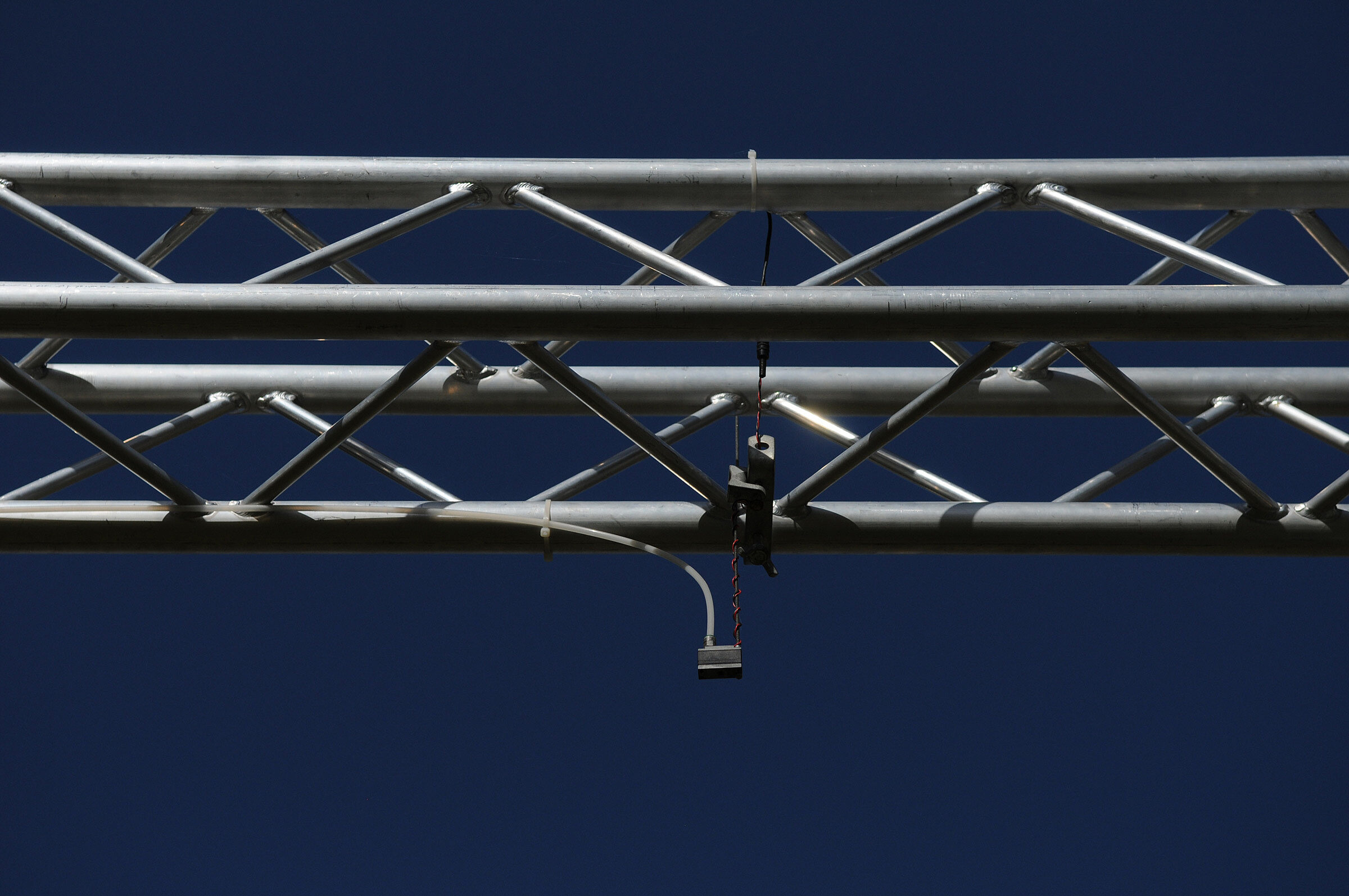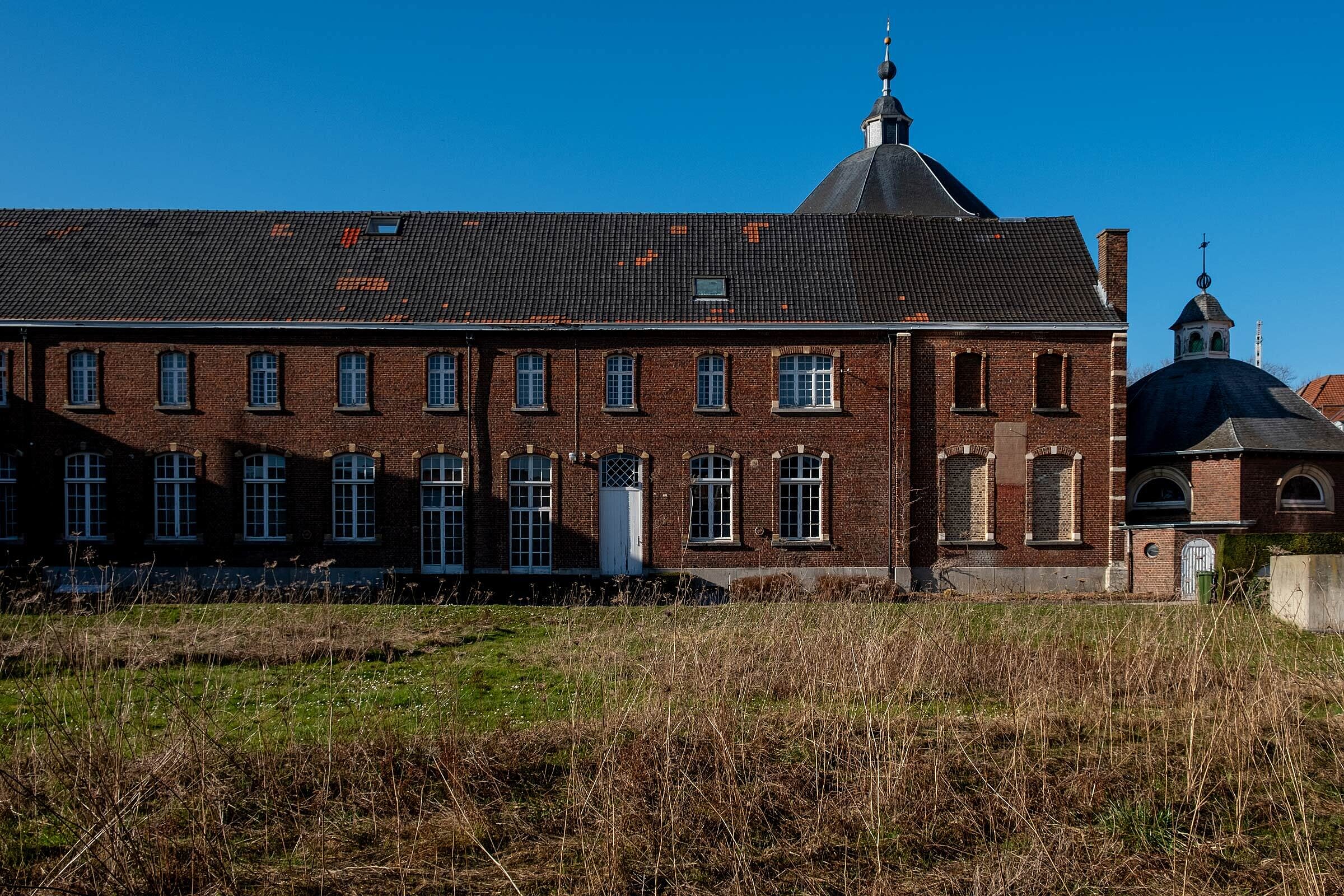-
Location:KADOC, Frederik Lintsstraat (entrance across from number 19) (garden)
-
Toegankelijkheid:This location is wheelchair accessible.
A spatial sound field of 42 valves provides aural fireworks.

Sound is created by variations of pressure in the air. For example, a loudspeaker has a moving membrane that can cause these changes in air pressure. This can also be done with air valves, as Dutch sound artist Edwin van der Heide illustrates in his public sound installation Pneumatic Sound Field. A timed release of compressed air from a pneumatic valve creates a brief pressure change combining a strong emission of air and a piercing hissing sound. Van der Heide is interested in the musical possibilities of this simple sound. An aluminium construction with 42 valves creates a spatial sound field above the listener’s heads, with hissing pulses whizzing from left to right, forming rhythms that, when repeating themselves quickly, can create different tonalities.

The Baroque KADOC chapel with an octagonal ground plan and an impressive dome rose between 1641 and 1705 and was for a long time a place of pilgrimage for Our Lady of the Fever. In 1871 the friars minor took it into use. They enlarged the chapel and also added a convent building. That monastery was to serve as a training centre for the friars minor who were were studying philosophy and theology at Leuven University. In the second half of the 1980s Leuven University bought the chapel and monastery and in 1990 KADOC moved in. KADOC is a documentation and research centre for religion, culture and society at KULeuven. Since 2018, both the exterior and interior of the chapel have been undergoing extensive refurbishment.
Text: Liesbet Nys (KU Leuven)
2006
➤ Concept & realisation: Edwin van der Heide
➤ Production: Tesla Berlin, Sonambiente 2006
➤ Production assistant: Eckehard Güther
➤ Audio-rate valve control interface: Sukandar Kartadinata
➤ Special thanks to: Luc Vints (KADOC)














